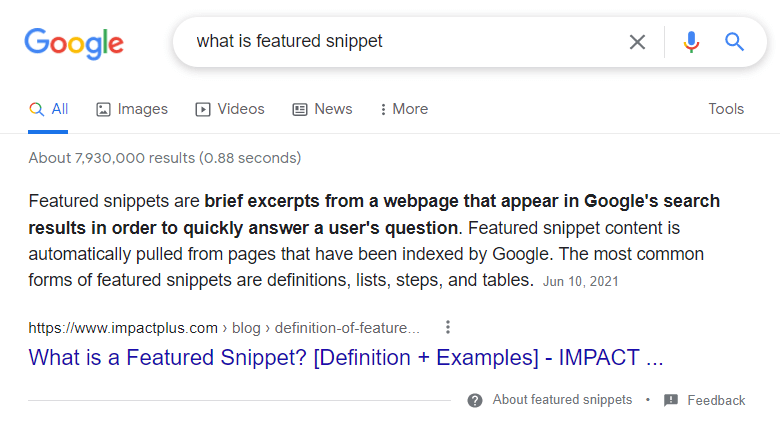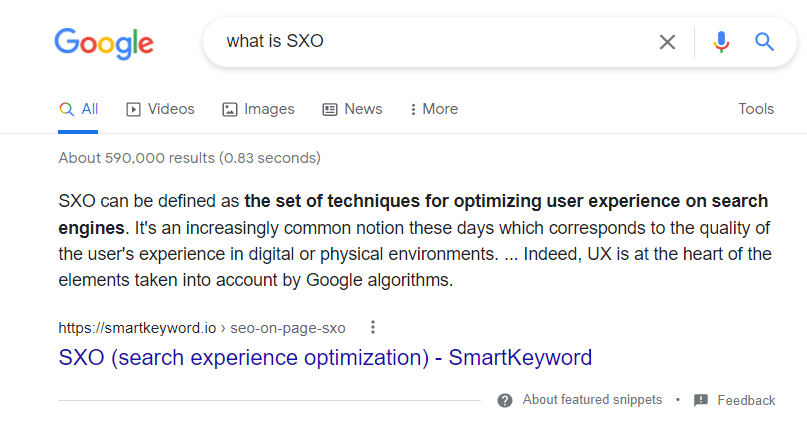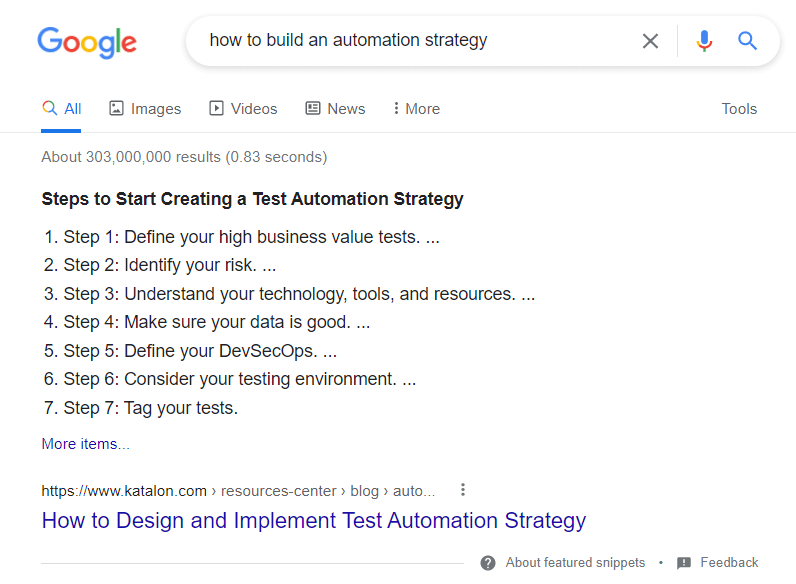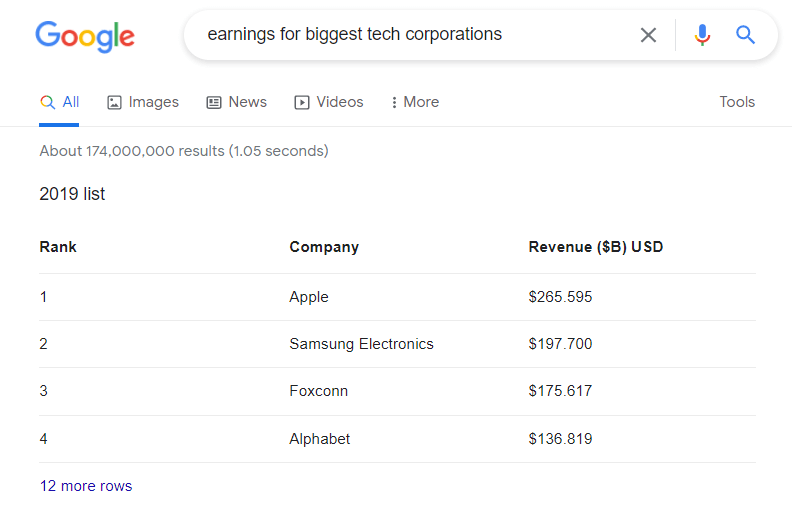Overview
In this article, we will take a closer look at Featured Snippets.
On what criteria are they highlighted on Search and how can you leverage them to improve your online visibility?
What is a Featured Snippet?
A Featured Snippet is content that appears at the top of a Google organic SERP. It is a quick source of information for users that is displayed before the first result of the user's query, often called "position 0". It provides a short and quick response to the user's query. Google does not create content for Featured Snippets. Instead, it extracts the content directly from a web page found in its index.
Here is an example of a Featured Snippet that is displayed for the Google query "what is featured snippet":

What are the different types of Featured Snippet?
Depending on the type of information the user is looking for, Google and other major search engines display different types of Featured Snippets. You have better chances to organize well your content and increase its chances of appearing in position zero if you understand which type of snippet best fits your topic.
Paragraph
This snippet provides users with a brief and practical definition or information about a topic in the form of a paragraph. This is the most common type of Featured Snippet, accounting for 50% of all Snippet results.

Numbered List
This type of Featured Snippet displays, as its name suggests, a numbered list of steps or processes to follow. This is the second most common type of Featured Snippet, with 37% of the results.

Table
This type of snippet responds to a request for data or other information presented in a table format.

Videos
YouTube is one of the largest search engines in the world. So, it's no surprise that video snippets are an important part of the ranking. If a video provides the best answer to a user's query, it will be included as a Featured Snippet. This type of snippet is especially useful for "how-to" queries.

Subscribe to our newsletter and gain access to strategic insights, exclusive analyses, and expert tips to enhance your online presence.
How to optimize Featured Snippet?
There is no guarantee that Google will use your content as a Featured Snippet. Google's algorithms are constantly evaluating snippets and search rankings to determine which ones provide the best answers to different user queries. However, to increase your chances of being chosen, make sure you create high-quality and targeted content that answers users' queries. To do so, follow these recommendations:
Use keyword research to find SERPs with Featured Snippets:
Effective keyword research is crucial to any SEO strategy because it can help you determine the type of content you need to produce to get noticed. In the case of Featured Snippets, it can also help you identify specific queries that are already ranked on the search engine for "Position #0".
There are several ways to find the right keywords for Featured Snippets. One is to manually type them into the search bar and see what comes up. Let's say you manage a gym website. You can start searching for terms related to the website’s theme like "how to start a workout program" or "physical training", etc. Then you can narrow down your queries by typing in more relevant and specific keywords such as "ab workout for beginners" for example.
If done manually, this keyword research process can take forever. That's why we recommend using the Semrush tool to find relevant keywords. This tool makes keyword research simple to determine the topics of Featured Snippets, which long-tail keywords have the lowest competition, and which types of Snippets are ranked higher for each query.
Write clear, concise, and targeted content
Having content that is easy to read and understand allows you to get it into Featured Snippets.
Add structured data/rich snippets to your page
Rich Snippet is structured data that highlights certain information on a web page. If you add this structured data to your content, you increase the appearance of your SERPs and you can increase your chances of getting a Featured Snippet. Here are some examples of Rich Snippets:
- Reviews
- Recipes
- Movies
- Events
Let's say you've written an article containing a recipe for salmon pasta. You've included specific information in your content, such as how much salmon and pasta are needed, the other ingredients to add, and the cooking time.
The search engine is more likely to identify and include this specific information in your snippet if you include structured data. To implement them, you need to add the appropriate Schema.org tags to the HTML code of a web page, to ensure that the right content on your page is selected as a Featured Snippet.
Ask questions in Headings
Since Featured Snippets usually answer questions, it is recommended to choose relevant keywords with high search volume and place them in your header tags
Make sure to answer questions clearly and concisely right after your H1, H2 and H3. Finally, make sure you don't exceed 60 words.
Be objective
Position 0 content is used to give a quick and useful answer to internet users to inform them and improve their experience with search engines. If you include your company's name or a personal pronoun (I, we, us), you limit your chances of being chosen in the Featured Snippet. Stay neutral in your wording and do not promote yourself but rather inform about a topic.
Featured Snippets are a great way to improve the CTR of your website. By applying good SEO practices, you increase your chances of reaching position 0. If you need support to optimize your SEO strategy and increase your chances of ranking for Featured Snippets, contact Eminence.






